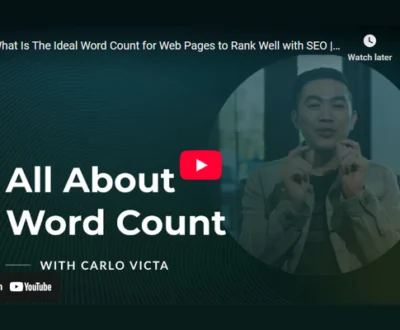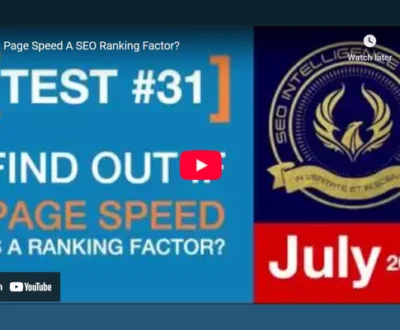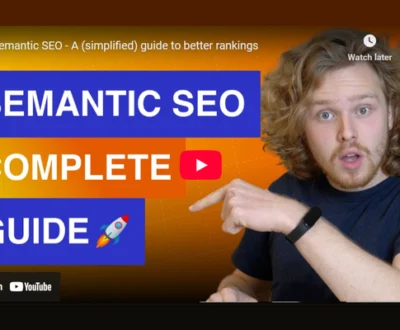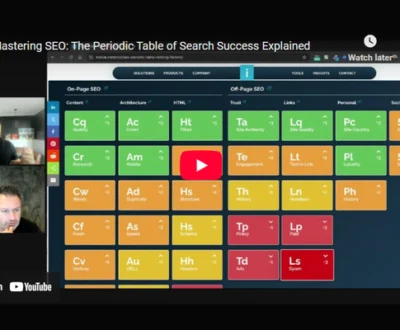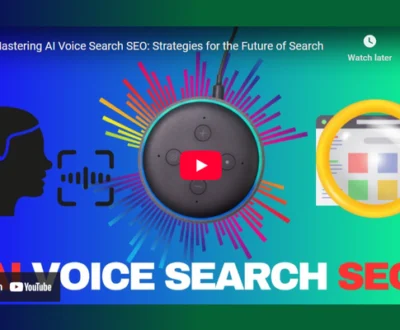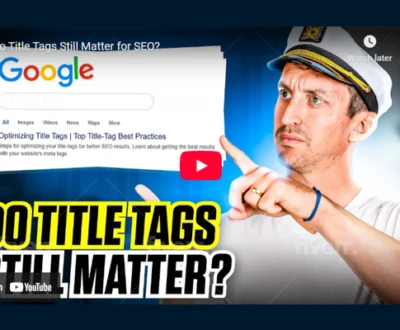When structuring content for featured snippet opportunities, I focus on clear, concise answers using short paragraphs with straightforward wording. I use question-based headings aligned with actual user queries and format answers in easily scannable forms like lists or definitions. Addressing related sub-questions helps cover topics thoroughly, while considering user intent guarantees relevance. This structured, readable approach increases the chances of snippet capture. By exploring these tactics, you’ll soon see how to optimize content effectively for search visibility.
- Key Takeaways
- What Are Featured Snippets and Why Do They Matter?
- How to Use Question-Based Headings Effectively
- Why Short Paragraphs Improve Featured Snippet Chances
- How to Format Definitions for Featured Snippets
- What Content Formats Are Best for Featured Snippets?
- How to Identify and Target Related Questions
- How Semantic Search Influences Featured Snippet Selection
- How to Measure and Maintain Featured Snippet Success
- Frequently Asked Questions
- Final Thoughts
Key Takeaways
- Align headings with actual user questions to match search intent and improve snippet eligibility.
- Use short paragraphs and clear wording to deliver concise, direct answers preferred by featured snippets.
- Organize content with H2 subheadings and structured lists or tables for easy scanning.
- Address related sub-questions under main headings to cover topics thoroughly and increase snippet opportunities.
- Implement schema markup to help search engines understand content structure and enhance snippet display chances.
What Are Featured Snippets and Why Do They Matter?
Featured snippets are specially highlighted excerpts that appear at the very top of Google’s search results, often called “Position 0,” and they deliver quick, direct answers to user queries.
These snippets come in various formats like paragraphs, lists, tables, and videos, designed to match the type of question asked. Their snippet significance lies in providing immediate information without requiring users to click further, which greatly enhances search visibility.
When your content secures a featured snippet, it appears prominently above other results, increasing your site’s credibility and chances of gaining organic traffic. This high placement offers a competitive edge by making your information more accessible and visible. Featured snippets appear in approximately 9.7% of US search queries, highlighting their relevance across many industries.
Understanding the role of featured snippets helps in structuring content effectively, ensuring it meets Google’s criteria for concise and relevant answers.
How to Use Question-Based Headings Effectively
How can question-based headings improve your content’s effectiveness? By aligning your headings with the actual questions users type into search engines, you increase both question alignment and user engagement.
This approach helps your content directly address searcher intent, making it more relevant and attractive to both readers and algorithms. Additionally, using H2 headings as subheadings helps break down content into specific sections, improving content organization.
To use question-based headings effectively, consider these four key points:
- Craft clear, specific questions that reflect real user queries.
- Follow each question with concise, direct answers to satisfy search intent.
- Use common interrogatives like who, what, why, and how to capture conversational searches.
- Organize related sub-questions under main headings to cover the topic thoroughly.
This structure not only improves readability but also boosts your chances of earning featured snippets, as Google favors content that answers questions clearly.
Ultimately, question-based headings foster trust and authority by meeting user needs quickly and precisely.
Why Short Paragraphs Improve Featured Snippet Chances
Although many factors influence search rankings, short paragraphs play an essential role in increasing the chances of being selected for a featured snippet.
When I write in short paragraphs, I focus on delivering answers using short sentences and clear wording. This approach makes the content easier for both users and search engines to digest quickly.
Featured snippets typically display concise, direct information, so paragraphs that are brief and to the point align well with this format. Additionally, short paragraphs improve readability, keeping readers engaged and reducing the chance they’ll skip over important details.
Clear wording combined with direct answers helps meet Google’s preference for objective, straightforward content. By structuring my information in this way, I increase the likelihood that Google will pick my content for a featured snippet, which can boost visibility and credibility.
How to Format Definitions for Featured Snippets
Short paragraphs help present information clearly, but when it comes to definitions, structuring the content requires additional precision to meet search engine preferences.
For effective definition optimization and snippet strategies, I focus on clarity, brevity, and format. Here’s what works best:
- Use a “What is X?” header with target keywords near the definition to signal relevance.
- Keep the definition concise—40 to 60 words—avoiding filler to maintain focus.
- Bold key terms with tags to emphasize important concepts without opinion.
- Employ an inverted pyramid style by placing the definition upfront, followed by brief elaboration in short paragraphs.
This approach aligns with Google’s featured snippet requirements and supports crawlability.
I also recommend testing uniqueness and using a neutral, encyclopedic tone to enhance credibility.
What Content Formats Are Best for Featured Snippets?
When aiming for featured snippets, using lists and tables can make your content more accessible and easy to scan, especially for comparisons or step-by-step instructions.
Step-by-step guides work well because they break down processes into clear, manageable actions that users can follow quickly.
Additionally, formatted definitions help provide concise explanations that Google often favors for direct answers.
Lists and Tables
Several content formats stand out for featured snippets, with lists and tables being among the most effective.
List formatting works best when information is organized logically, with ordered lists guiding readers through steps or rankings, and unordered lists grouping related items without implying priority.
Table design, on the other hand, excels at displaying structured data side-by-side, enabling quick comparisons of features, prices, or specifications.
Both formats benefit from clear headings and concise entries to improve readability and snippet eligibility.
Here are four key points to take into account:
- Use short, clear bullet points or numbered steps in lists.
- Verify tables have precise, relevant headers for rows and columns.
- Keep formatting clean and mobile-friendly for better snippet access.
- Implement schema markup to help search engines understand structure.
Step-by-Step Guides
Understanding the most effective content formats for step-by-step guides can greatly increase your chances of securing a featured snippet. The step importance lies in clear, concise instructions that directly answer user queries.
Formatting techniques like ordered or unordered lists make it easier for Google to extract and display each step clearly. Paragraph snippets work well for brief overviews, summarizing essential steps in one or two sentences.
Incorporating hierarchical headings also helps organize content logically, guiding both readers and search engines through the process. Using simple language and avoiding unnecessary jargon guarantees each step is easy to follow.
Formatted Definitions
A well-crafted definition is a powerful tool for securing featured snippets, especially for queries seeking quick, clear explanations.
When creating formatted definition examples, I focus on concise, direct language that answers “what is” type questions within 40 to 60 words. Optimizing definition keywords naturally within the text improves snippet eligibility.
Here’s how I approach it:
- Use brief paragraphs with clear, factual content that addresses a single concept.
- Employ proper semantic HTML, like
tags, to help Google parse the content.
- Avoid fluff or unnecessary details to maintain clarity and brevity.
- Structure each definition to align closely with common user queries for better ranking.
This method guarantees my definitions are straightforward, readable, and well-positioned for featured snippet capture.
How to Identify and Target Related Questions
How do you discover the questions people commonly ask around your topic? Effective question identification starts with using tools like Google’s People Also Ask and Autocomplete features. These reveal the most frequent queries related to your subject, offering insight into user intent.
I also explore online communities such as forums and Q&A sites, where real users pose authentic questions. Keyword tools like Semrush further help by filtering and uncovering relevant question keywords.
By combining these methods, I gather a thorough list of related questions that reflect what users genuinely want to know. Understanding user intent behind each question guarantees my content directly addresses their needs, increasing its value and relevance.
Once identified, targeting these questions with clear, concise answers and question-based subheadings helps structure content efficiently. This focused approach not only improves topical depth but also boosts the chances of capturing featured snippets, providing readers with precise, well-organized information.
How Semantic Search Influences Featured Snippet Selection
Semantic search changes the way featured snippets are chosen by focusing on the meaning behind search queries, not just the exact words used.
It looks at context and user intent to deliver results that truly answer questions. Understanding this helps you create content that matches what users are really asking, improving your chances of being featured.
Semantic Search Basics
Because search engines now focus on understanding the intent behind queries, they can select featured snippets that better satisfy what users actually want to know.
Semantic search plays an essential role by interpreting user intent, not just matching keywords. It uses natural language processing to grasp the meaning and context of a query, improving snippet relevance.
Here’s how semantic search works:
- Transforms queries and content into vector embeddings representing concepts.
- Compares these vectors to find content closely related to user intent.
- Ranks results based on conceptual relevance rather than keyword frequency.
- Handles complex, conversational queries by understanding implied meanings.
Contextual Relevance Impact
Although many factors influence featured snippet selection, contextual relevance stands out as a key element that directly affects which content search engines highlight.
Semantic search plays an essential role by helping Google interpret the meaning behind queries, ensuring content achieves strong contextual alignment with the user’s search intent. When content clearly and concisely addresses specific questions, it’s more likely to be selected for a featured snippet.
This alignment not only improves visibility but also enhances user experience by providing precise, relevant information.
To optimize for featured snippets, I focus on matching content closely with search intent, using natural language and clear answers. Understanding how semantic search influences contextual relevance helps me create content that meets both user needs and search engine criteria effectively.
How to Measure and Maintain Featured Snippet Success
How do you know if your efforts to capture featured snippets are truly paying off?
Measuring and maintaining featured snippet success requires careful snippet analysis and monitoring key performance metrics. I rely on tools like Google Search Console and Semrush to track where my content appears as a snippet and how users engage with it.
Here are four significant areas I focus on:
- Snippet Capture Rate – how often my pages are shown in snippets for targeted queries.
- Click-Through Rate (CTR) – the percentage of users clicking through from the snippet to my site.
- Traffic Growth – increases in organic visits driven by snippet visibility.
- Engagement Metrics – time spent on page and bounce rates that indicate content quality.
Frequently Asked Questions
How Often Should I Update Content to Keep Featured Snippets?
I update my content every 6 to 12 months to maintain content freshness. This update frequency helps keep featured snippets by ensuring information stays relevant and accurate, which Google favors for better search visibility.
Can Images or Videos Alone Trigger Featured Snippets?
You might think images or videos alone trigger featured snippets, but they don’t. I’ve learned image optimization and video relevance play key roles, yet text remains essential to earn that snippet spotlight on Google search results.
What Role Does Page Loading Speed Play in Snippet Ranking?
I believe loading time considerably impacts user experience, which Google values. While it doesn’t directly rank snippets, faster loading pages improve overall SEO and make your content more likely to appear in featured snippets.
Are There Industries Where Featured Snippets Are Less Common?
Think of niche markets as hidden gardens; featured snippets bloom less in e-commerce or travel due to content specificity. Their queries often lack clear, concise answers, so snippets don’t flourish as much compared to knowledge-heavy industries.
How Do Voice Search Queries Impact Featured Snippet Strategies?
Voice search changes how I approach featured snippets because query intent is more conversational and question-based. I focus on clear, concise answers that match natural speech to capture those voice search opportunities effectively.
Final Thoughts
Think of featured snippets like a well-organized toolbox: when you arrange your content clearly with question-based headings and concise paragraphs, you make it easy for search engines to find and use your best answers. Just as a craftsman relies on the right tool at the right moment, structuring your content thoughtfully boosts your chances to be the featured source. Keep refining your approach, and you’ll maintain that valuable top spot effectively.
Windee Tan is a seasoned SEO Specialist with over a decade of experience helping businesses grow their organic visibility through data-driven strategies. He specializes in technical SEO, content optimization, and local search, with deep knowledge of tools like GA4, GSC, SEMrush, and Screaming Frog. Windee is passionate about translating complex SEO insights into practical tactics that drive real-world results. When he's not auditing sites or crafting keyword strategies, he’s exploring the latest trends in AI, digital marketing, and productivity.
About this blog
We are a digital marketing company with a focus on helping our customers achieve great results across several key areas.
Request a free quote
We offer professional SEO services that help websites increase their organic search score drastically in order to compete for the highest rankings even when it comes to highly competitive keywords.
Subscribe to our newsletter!
More from our blog
See all postsRecent Posts
- Writing Clear Calls to Action That Boost On-Page SEO 21 August 2025
- Why Word Count Still Matters in On-Page SEO Today 20 August 2025
- Why Site Speed Is Critical for On-Page SEO Success 19 August 2025



